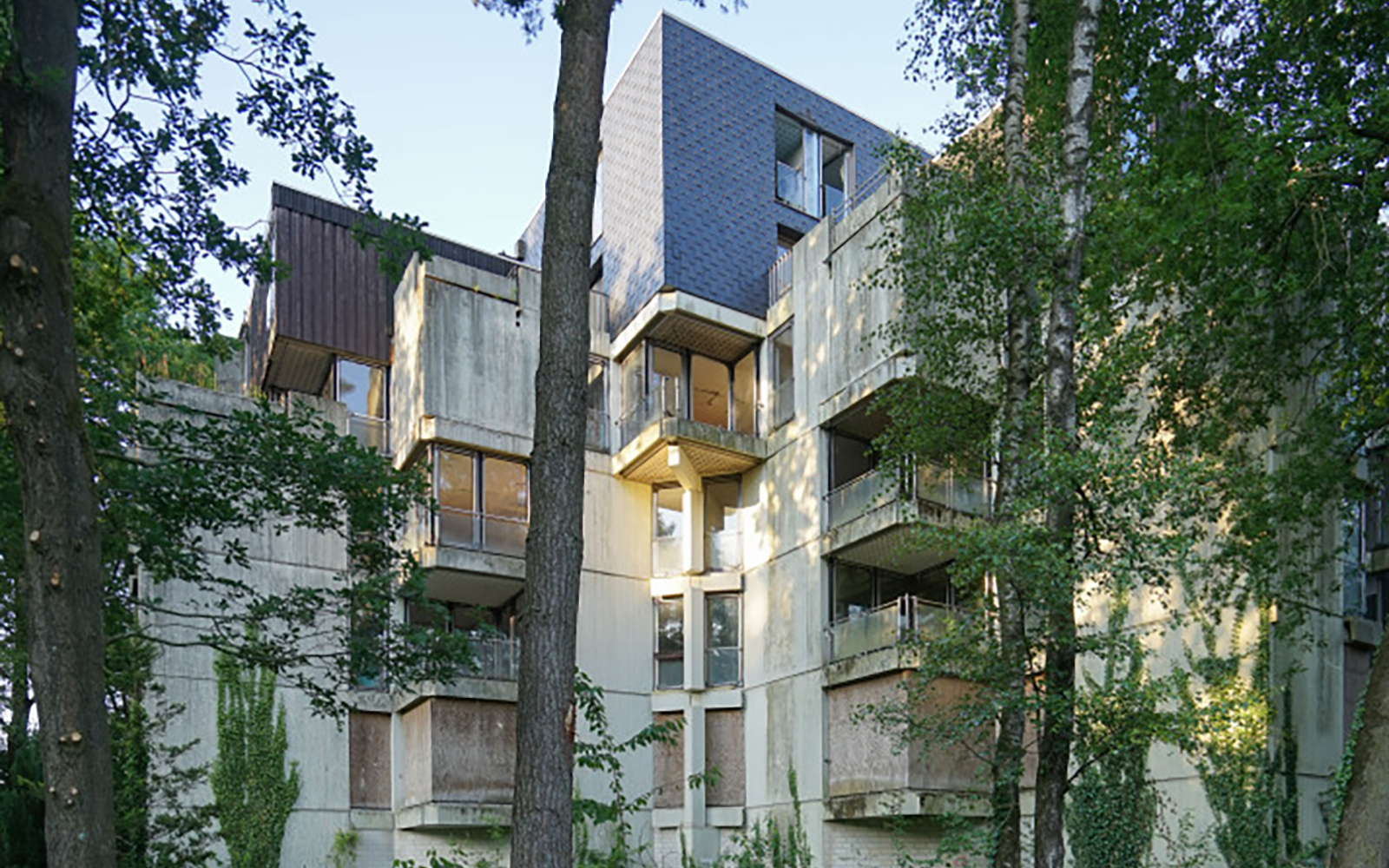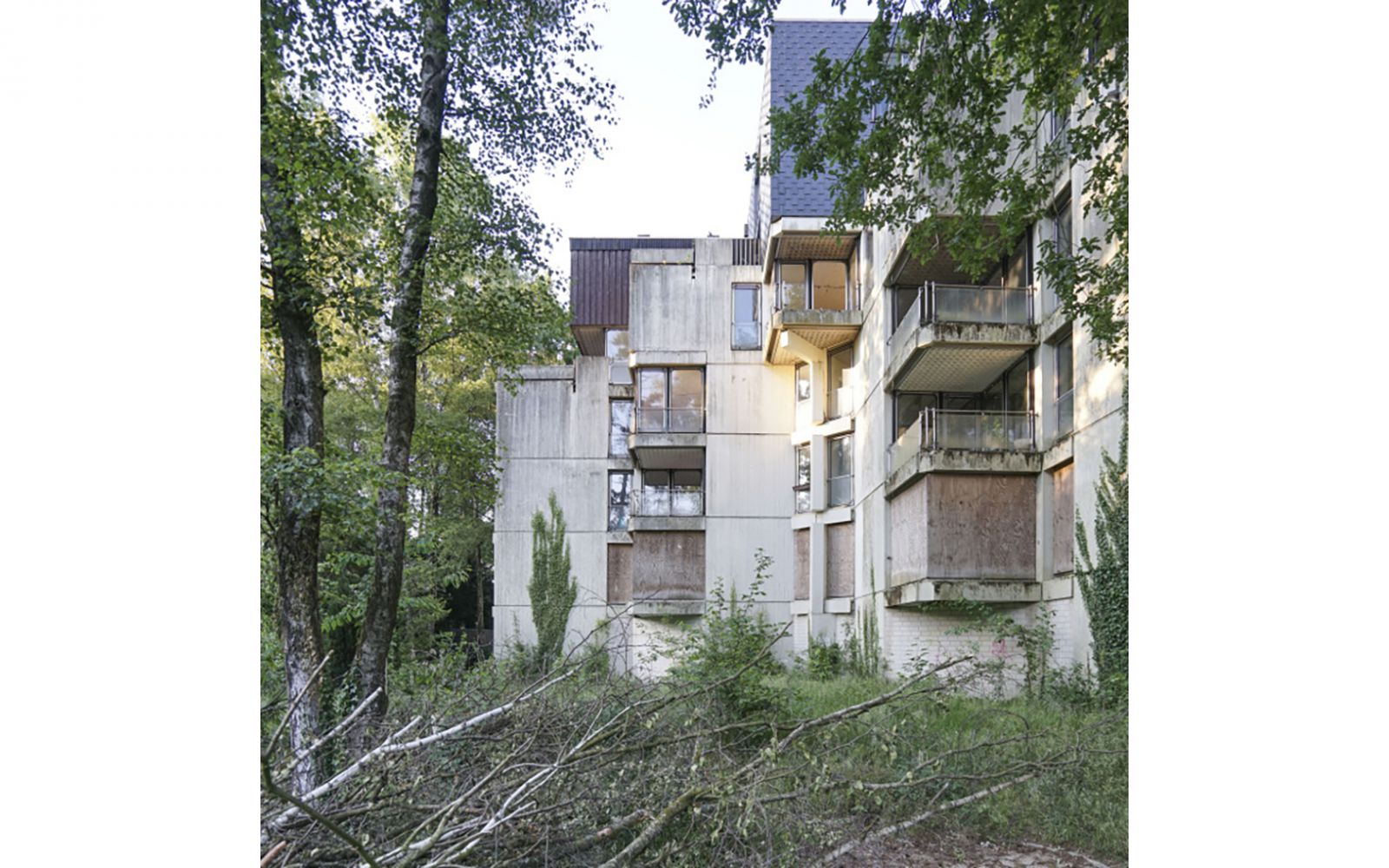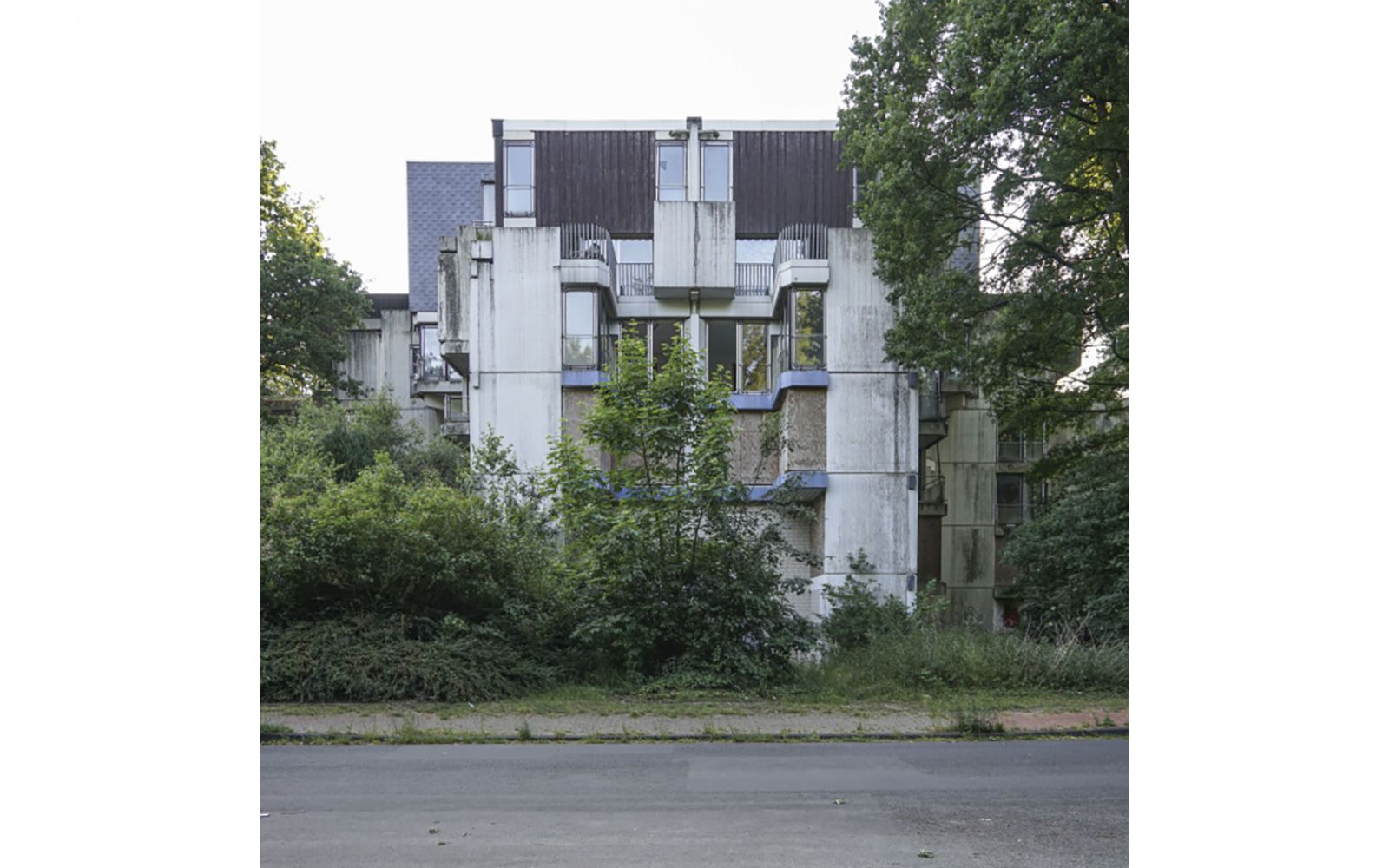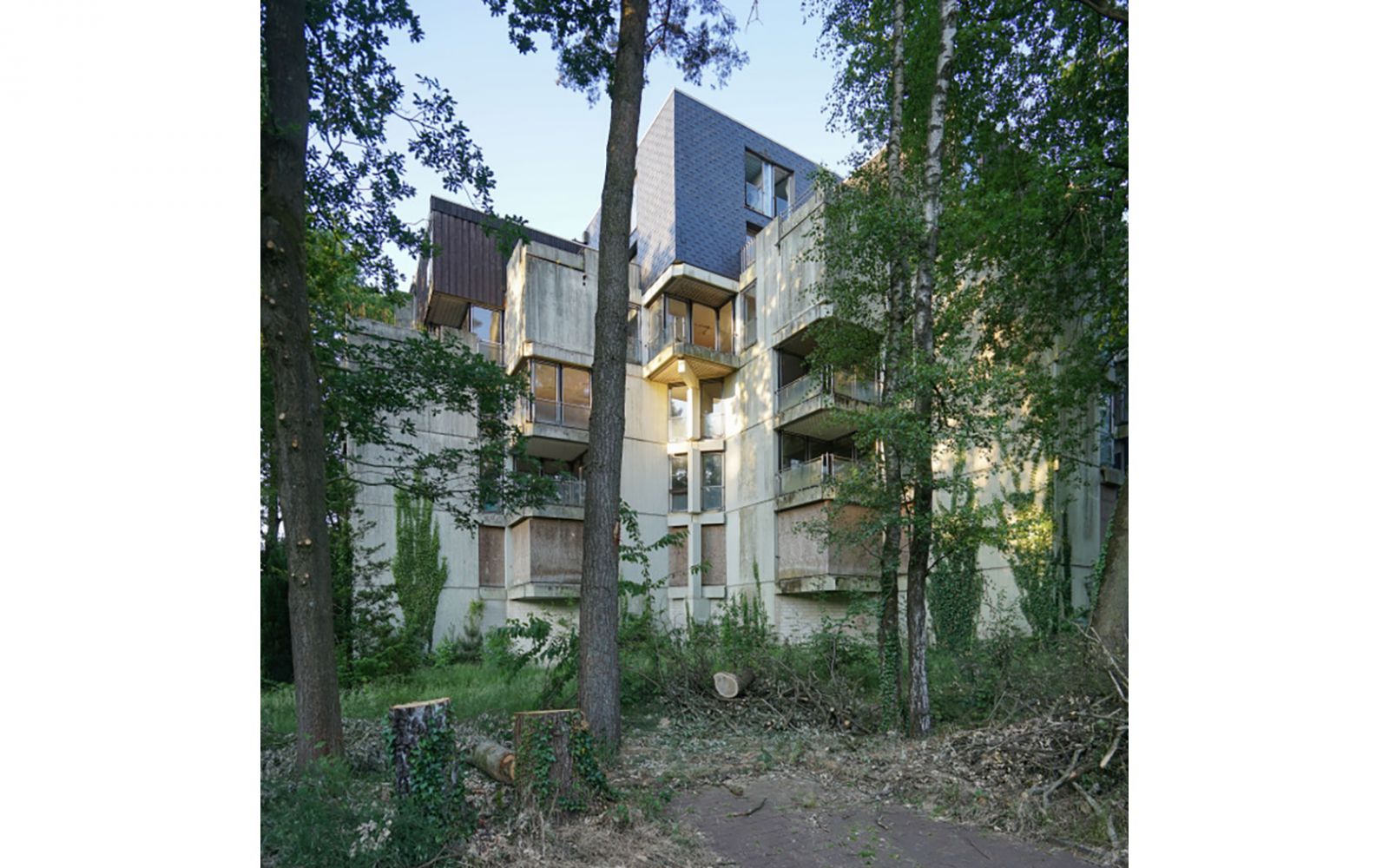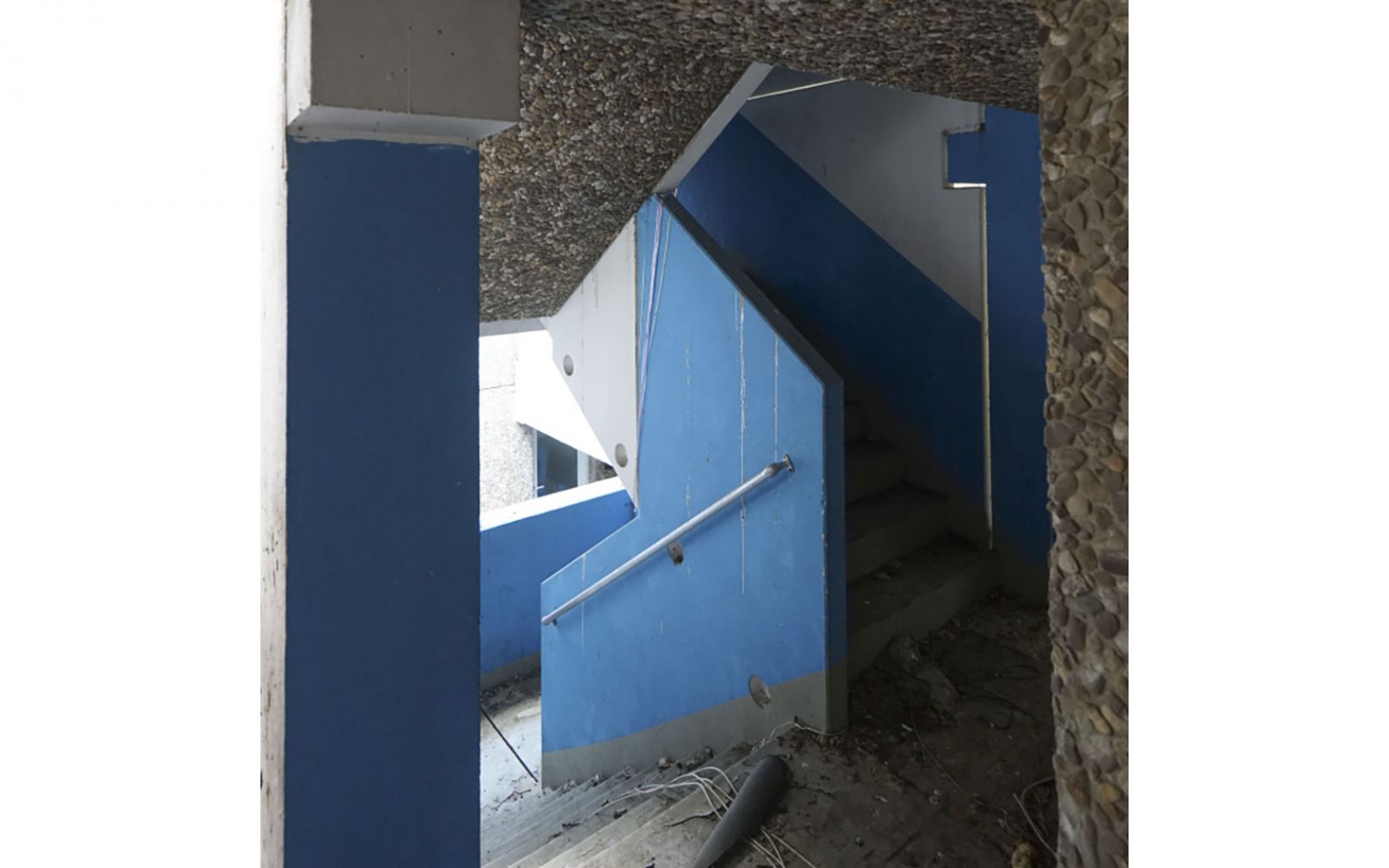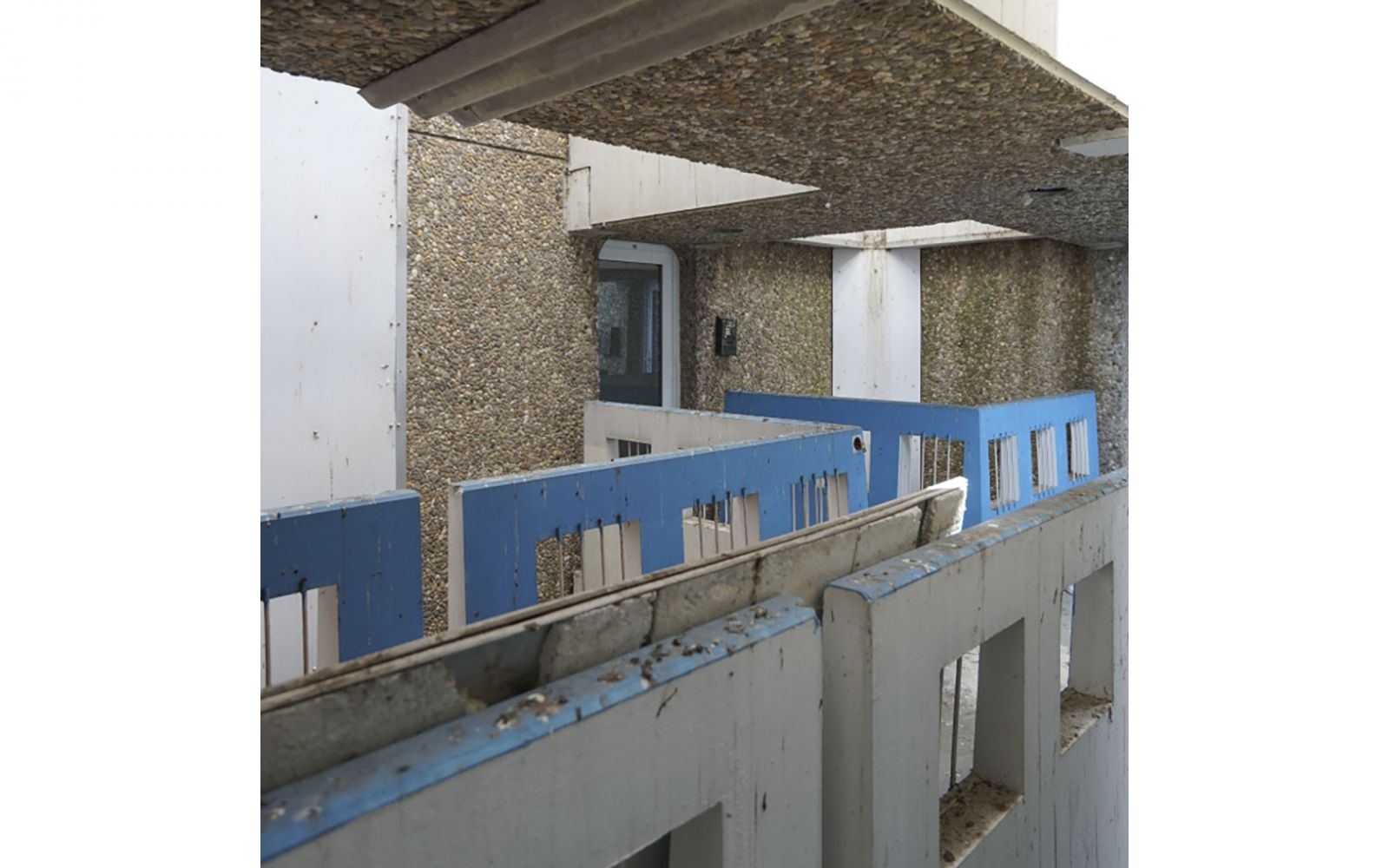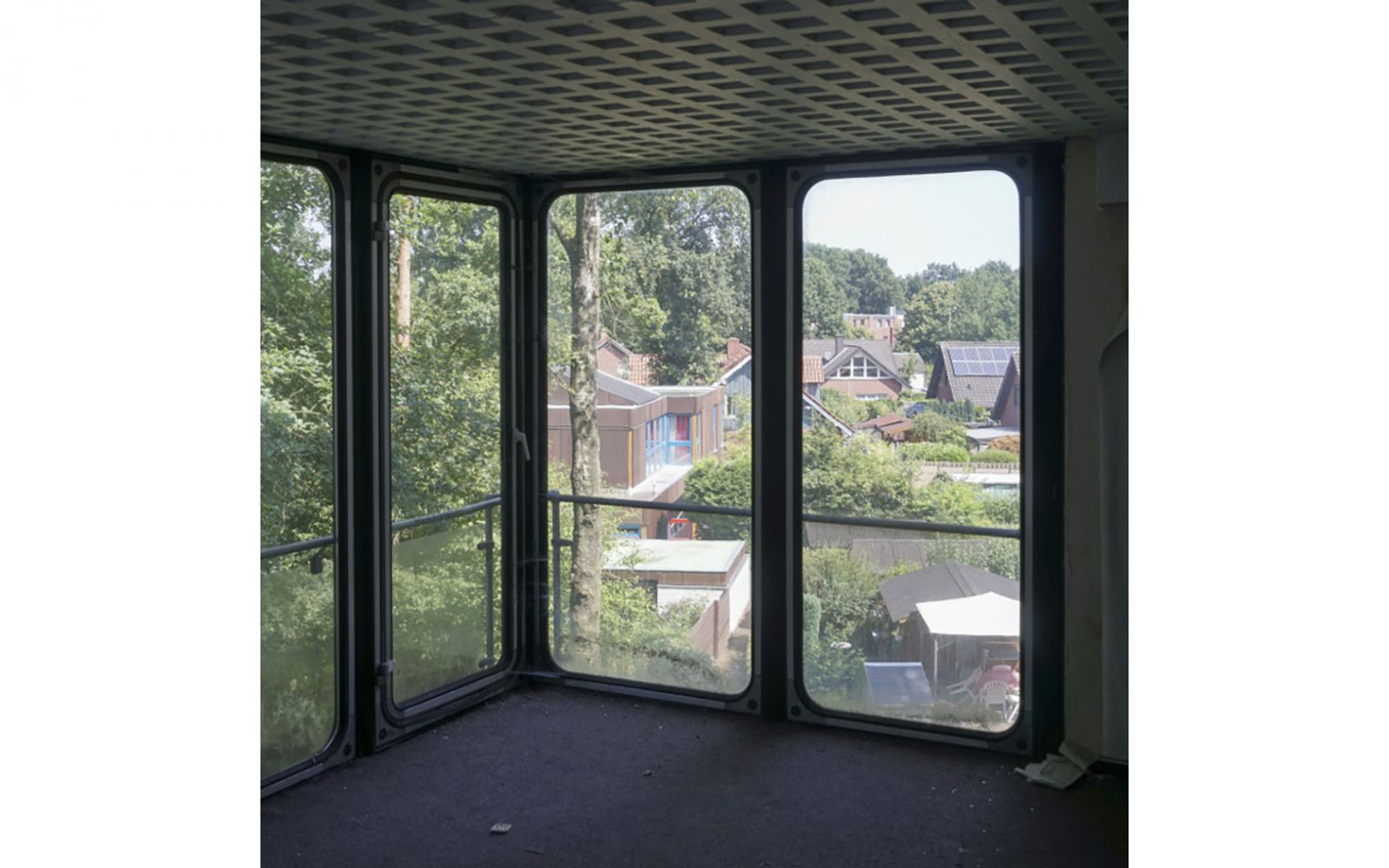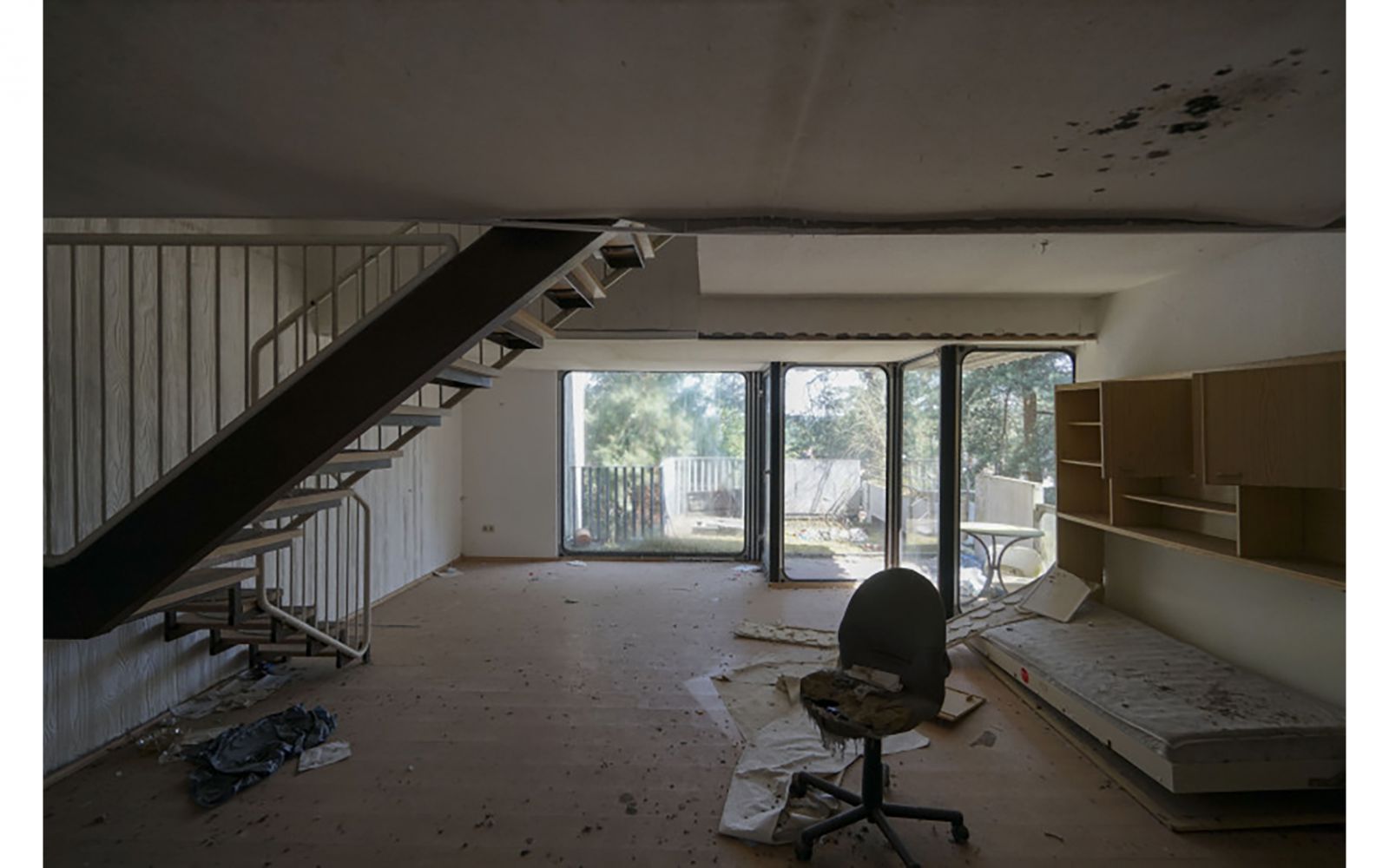Habiflex
Architects: Richard Gottlob and Horst Klement
Year of completion: 1974
Location: Dorsten, Germany
Deserted since 2008 and threatened with demolition
Latest update 3 December 2020
Photos Jan Kampshoff 2015.
About the Apartment Complex
Habiflex, built in 1974, was one of three experimental projects built in the planned ‘New Town of Wulfen’ as a model for a new form of housing supported by the federal government.
‘New Town Wulfen’ was a city built in the 1960’s with a new urban plan that was to include high quality living space and infrastructure for the expected 50,000 residents migrating to take part in the mining industry. However, the desired population never materialized because the mining activities were not very successful. Structural problems and owner neglect led to its eventual abandonment and current precarious state.
The Habiflex structure consisted of 40 condominiums grouped around an open courtyard. Among other things, residents changed the apartment floor plans by adding movable walls.
The Habiflex concept was considered innovative and was celebrated by Spiegel in 1975 as an example of future-oriented residential construction and was awarded a prize in the federal competition ‘Flexible Floor Plans’. However, the design promised more than reality.
Because it was precisely the flexibility that resulted in structural and physical defects. The construction was quickly neglected. Vacancy followed. After a bulky waste fire, fire protection was checked for the first time in 2007 and it was virtually non-existent. Since then, the house has officially been considered uninhabitable and is gradually falling into disrepair. In 2008 the last residents moved out and nature is now taking back the building.
Source: bigbeautifulbuildings.de/objekte/habiflex
The city of Wulfen even wanted to put the building under monument protection in 2000. But this proposal did not find a majority in the Council. The property often changed hands. While part of the apartments was modernized, another part continued to deteriorate. A buyer who bought the Habiflex at a foreclosure auction in the early 2000s had the property converted into condominiums and then offered them as an investment for around 145,000 euros.
According to Immobilien-Zeitung, not even half of the 40 apartments were sold and occupied by 2007. The last time the Habiflex appeared at Immobilienscout24 according to the report was in March 2016. At a ridiculous price of 1 euro.
Further information is also available under Wulfen-Wiki (German).
Latest News
Dorsten-Online
Schrottimmobilien in Barkenberg – SPD stellt Antrag
SPD Dorsten fordern Abriss Wulfener Mark (SPD Dorsten demands demolition of Habiflex)
Uploaded by Dorsten-Online, 4 June 2020 (German)
Architectural Highlights
The ‘flex’ syllable in its name alludes to the flexibility of the living spaces. The total space of each of the 40 housing units in the building could be divided to suit the needs of residents by sliding walls that change the floor plans and the Gelsenkirchen balcony that could be turned into a conservatory by folding the exterior walls. The building is made of concrete and glass and the units are grouped around an open courtyard. The variation in surface textures and irregular facade of the building give it a stronger identity, rare in conventional high-rise apartment buildings.
Threat
Designed as an experimental apartment complex with dynamic floor plans, the building ultimately failed in its execution. Insufficient insulation, problems with humidity and years of mismanagement led to today's dilapidated state. Unfortunately, the flexible components led to structural defects, and insufficient insulation, problems with humidity and mismanagement by its owners led to its damaged state. It was declared uninhabitable and it’s been empty since 2008. In 2009 it had to be walled up following security concerns. The current owners can’t finance refurbishment or demolition, so there is a call for investors to submit ideas for either renovation or demolition and new construction. It is unknown whether an investor has been found.
Literature
Wulfen: Space flexibility experiments in a West German New Town, pp. 174 – 175.
Joseph G. Hajdu
1982
Downlaod the pdf
News Archive
SOS Brutalism
Richard Gottlob / Horst Klement: Habiflex, 1974
Bigbeautifulbuildings.de
Goodbye Utopia – Back to the City of the Future, 25 August - 2 September 2018
Baukultur Nordrhein Westfalen, 25 April 2016
120 Zimmer für 1 Euro
Habiflex
Richard Gottlob, Horst Klement
1974, Germany
